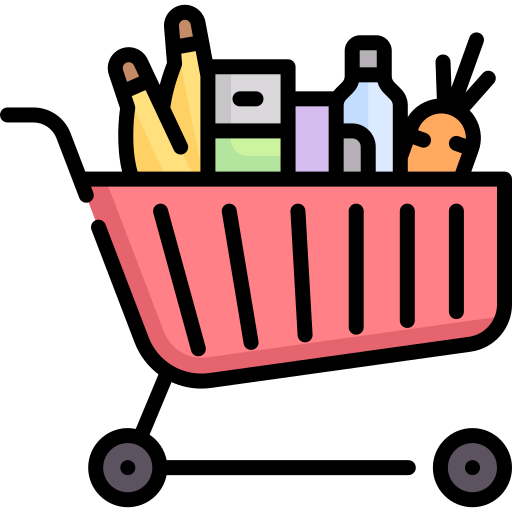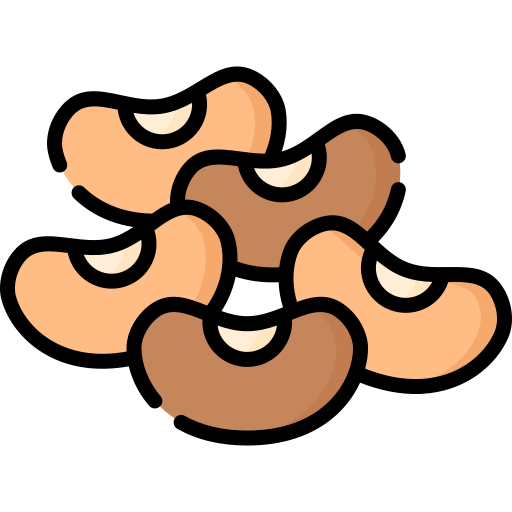
Introduction
Iron (Fe) is a micronutrient that we've all probably heard of, but don't know what it actually does. Sure, everyone knows that Popeye loves his spinach, but what does iron actually do, and what are some good sources of it?

High Iron Foods

Role of Iron
Iron is an essential micronutrient, meaning that your body does not produce it. Rather, it must be obtained from food or supplementation. The Recomended Daily Value (RDA) of iron is 8 mg for men and 18 mg for women. If you're pregnant, then the RDA increases to 27 mg. It is one of the few micronutrients required to be on a food label, making it easy to track.
The main function of iron is for oxygen transportation. This is done by the production of heme to make hemoglobin, a protein found in red blood cells that carries oxygen from your lungs throughout your entire body. Oxygen plays a vital role in cellular function and the production of Adenosine Triphosphate (ATP), the body's main source of energy (it is often referred to as the "energy currency").

Symptoms of Low Iron
Iron deficiency is one of the more common nutrient deficiencies, particularly impacting children and women. Lack of iron in the body leads to a lack of hemoglobin production, impacting all cells in your body. Also known as sideropenia, iron deficiency impacts about 10% of men and 35% of women. Other potential causes of iron deficiency could be low protein, vitamin B12, vitamin A, or folate. Common symptoms of iron deficiency anemia include:
Fatigue
Weakness
Headache
Brain fog
Rapid heart rate
Trouble breathing
Impaired immune system
Irritability
Pale skin
Brittle nails
Hair loss

Optimal Ranges for Men
Ferritin: 15-300 ng/mL
Total Iron Binding Capacity (TIBC): 250-450 mcg/dL
Iron: 50-195 mcg/dL (ages 20-29) or 50-180 mcg/dL (ages 30+)
Iron % Saturation: 20-48 %
Hemoglobin: 11.10-15.90 g/dL
Red Blood Cell (RBC) Count: 3.77-5.28 cells/mcL
Hematocrit: 34.0-46.6 %

Optimal Ranges for Women
Ferritin: 15-150 ng/mL
Total Iron Binding Capacity (TIBC): 250-450 mcg/dL
Iron: 40-190 mcg/dL (ages 20-49) or 45-160 mcg/dL (ages 50+)
Iron % Saturation: 20-48 %
Hemoglobin: 11.10-15.90 g/dL
Red Blood Cell (RBC) Count: 3.80-5.19 cells/mcL
Hematocrit: 34.0-46.6 %

Daily Consumption
Men: 8 mg
Women: 18 mg
Iron is found in both animal based (heme) and plant based (non-heme) foods; however, heme iron (found in animal products) is much more bioavailable than non-heme iron (found in plant based products). Since non-heme iron is not absorbed as well by the body, you may need to consume at least double the recommended amounts of iron if you do not consume meat. For reference, heme iron has an absorption rate of about 15-35%, whereas non-heme iron has an absorption rate of about 2-20%. However, the absorption rate of non-heme iron is improved when consumed with heme-iron.
The following tables list foods by their content of iron per serving, per 100 g, and per 100 calories, sorted alphabetically. Each food is raw, unless otherwise specified.

Foods High In Iron
Meat (raw)

Fish and Seafood (Raw unless specified)

Beans (dried)

Vegetables (Raw)

Fruit

Nuts

Seeds

Grains (Raw)

Other

Best Sources of Iron (Animals)
Per serving: Beef Liver - 5.6 mg (4 oz, 113 g)
Per 100 g: Cuttlefish - 6.0 mg
Per 100 cal: Oysters - 9.1 mg
Best Sources of Iron (Plants)
Per serving: 100% Chocolate - 4.9 mg (1 oz, 28 g)
Per 100 g: 100% Chocolate - 17.4 mg
Per 100 cal: Spinach - 11.6 mg
Other Ways to Consume Iron
Sometimes, eating iron rich foods isn't enough to raise your iron levels if you're deficient. An iron deficiency might also signal that you are low in vitamin C, as vitamin C aids in the absorption of iron. Try to eat more naturally occuring sources of vitamin C, such as the following:
Citrus fruits: grapefruit, lemon, orange, and kiwi
Berries: Strawberries, raspberries, blackberries, and blueberries
Cruciferous vegetables: Broccoli, cauliflower, kale, cabbage, and brussel sprouts
Other vegetables: Bell peppers, spinach, and tomatoes
If you are unable to raise your iron or ferritin through food alone, it may be helpful to take an iron supplement. Vitamin C supplementation may also be useful, but consult with your doctor before making any changes:
Iron: 60-330 mg daily
Vitamin C: 250-500 mg daily

Sources
1. FoodData Central
2. Nutrition Value
3. Function Health
4. FlatIcon
5. 12 Healthy Foods That Are High in Iron
6. The True Nutrients - Iron
7. Iron - Fact Sheet for Health Professionals
8. Iron - Fact Sheet for Consumers
9. Iron-Deficiency Anemia
10. 20 Foods That Are High in Vitamin C
11. Vitamin C - Vitamins and minerals
This post may contain affiliate links
Iron (Fe) is a micronutrient that we've all probably heard of, but don't know what it actually does. Sure, everyone knows that Popeye loves his spinach, but what does iron actually do, and what are some good sources of it?

High Iron Foods

Role of Iron
Iron is an essential micronutrient, meaning that your body does not produce it. Rather, it must be obtained from food or supplementation. The Recomended Daily Value (RDA) of iron is 8 mg for men and 18 mg for women. If you're pregnant, then the RDA increases to 27 mg. It is one of the few micronutrients required to be on a food label, making it easy to track.
The main function of iron is for oxygen transportation. This is done by the production of heme to make hemoglobin, a protein found in red blood cells that carries oxygen from your lungs throughout your entire body. Oxygen plays a vital role in cellular function and the production of Adenosine Triphosphate (ATP), the body's main source of energy (it is often referred to as the "energy currency").

Symptoms of Low Iron
Iron deficiency is one of the more common nutrient deficiencies, particularly impacting children and women. Lack of iron in the body leads to a lack of hemoglobin production, impacting all cells in your body. Also known as sideropenia, iron deficiency impacts about 10% of men and 35% of women. Other potential causes of iron deficiency could be low protein, vitamin B12, vitamin A, or folate. Common symptoms of iron deficiency anemia include:

Optimal Ranges for Men

Optimal Ranges for Women

Daily Consumption
Iron is found in both animal based (heme) and plant based (non-heme) foods; however, heme iron (found in animal products) is much more bioavailable than non-heme iron (found in plant based products). Since non-heme iron is not absorbed as well by the body, you may need to consume at least double the recommended amounts of iron if you do not consume meat. For reference, heme iron has an absorption rate of about 15-35%, whereas non-heme iron has an absorption rate of about 2-20%. However, the absorption rate of non-heme iron is improved when consumed with heme-iron.
The following tables list foods by their content of iron per serving, per 100 g, and per 100 calories, sorted alphabetically. Each food is raw, unless otherwise specified.

Foods High In Iron
| Food | Serving Size | Iron Per Serving |
Iron Per 100 g |
Iron Per 100 cal |
|---|---|---|---|---|
| Beef Liver | 4 oz (113 g) |
5.5 mg (31 %) |
4.9 mg (27 %) |
3.6 mg (20 %) |
| Chicken Breast (Boneless & Skinless) |
4 oz (113 g) |
0.4 mg (2 %) |
0.4 mg (2 %) |
0.3 mg (2 %) |
| Chicken Thighs (Boneless & Skinless) |
4 oz (113 g) |
0.9 mg (5 %) |
0.8 mg (4 %) |
0.7 mg (3 %) |
| Eggs | 1 egg (50 g) |
0.8 mg (5 %) |
1.7 mg (9 %) |
1.1 mg (6 %) |
| Ground Beef (93% Lean) |
4 oz (113 g) |
2.6 mg (15 %) |
2.3 mg (13 %) |
1.5 mg (9 %) |
| Ground Turkey (93% Lean) |
4 oz (113 g) |
1.3 mg (7 %) |
1.2 mg (6 %) |
0.8 mg (4 %) |
| Pork Tenderloin | 4 oz (113 g) |
1.1 mg (6 %) |
1.0 mg (5 %) |
0.9 mg (5 %) |
| Venison | 4 oz (113 g) |
3.8 mg (21 %) |
3.4 mg (19 %) |
2.8 mg (16 %) |

Fish and Seafood (Raw unless specified)
| Food | Serving Size | Iron Per Serving |
Iron Per 100 g |
Iron Per 100 cal |
|---|---|---|---|---|
| Anchovies (Canned) |
1.6 oz (45 g) |
2.1 mg (12 %) |
4.6 mg (26 %) |
2.2 mg (12 %) |
| Clams (Canned) |
3 oz (85 g) |
1.5 mg (9 %) |
1.8 mg (10 %) |
1.7 mg (9 %) |
| Crab (Canned) |
3 oz (85 g) |
0.4 mg (3 %) |
0.5 mg (3 %) |
0.6 mg (4 %) |
| Cuttlefish | 3 oz (85 g) |
5.1 mg (28 %) |
6.0 mg (33 %) |
7.6 mg (42 %) |
| Haddock | 3 oz (85 g) |
0.1 mg (1 %) |
0.2 mg (1 %) |
0.2 mg (1 %) |
| Halibut | 3 oz (85 g) |
0.1 mg (1 %) |
0.2 mg (1 %) |
0.2 mg (1 %) |
| Herring | 3 oz (85 g) |
0.9 mg (5 %) |
1.1 mg (6 %) |
0.7 mg (4 %) |
| Mackerel (Canned) |
3 oz (85 g) |
1.7 mg (9 %) |
2.0 mg (11 %) |
1.3 mg (7 %) |
| Mussels | 3 oz (85 g) |
3.4 mg (19 %) |
4.0 mg (22 %) |
4.6 mg (26 %) |
| Octopus | 3 oz (85 g) |
4.5 mg (25 %) |
5.3 mg (29 %) |
6.5 mg (35 %) |
| Oysters | 3 oz (85 g) |
3.9 mg (22 %) |
4.6 mg (26 %) |
9.0 mg (51 %) |
| Salmon | 3 oz (85 g) |
0.7 mg (3 %) |
0.8 mg (4 %) |
0.6 mg (3 %) |
| Sardines (Canned) |
3 oz (85 g) |
2.5 mg (14 %) |
2.9 mg (16 %) |
1.4 mg (8 %) |
| Scallops | 3 oz (85 g) |
0.3 mg (2 %) |
0.4 mg (2 %) |
0.6 mg (3 %) |
| Shrimp | 3 oz (85 g) |
0.2 mg (1 %) |
0.2 mg (1 %) |
0.3 mg (1 %) |
| Tilapia | 3 oz (85 g) |
0.5 mg (3 %) |
0.6 mg (3 %) |
0.6 mg (3 %) |
| Tuna (Canned) |
4 oz (113 g) |
1.8 mg (10 %) |
1.6 mg (9 %) |
1.9 mg (10 %) |

Beans (dried)
| Food | Serving Size | Iron Per Serving |
Iron Per 100 g |
Iron Per 100 cal |
|---|---|---|---|---|
| Black Beans | 1/4 cup (50 g) |
2.5 mg (14 %) |
5.0 mg (28 %) |
1.5 mg (8 %) |
| Chickpeas | 1/4 cup (50 g) |
2.2 mg (12 %) |
4.3 mg (24 %) |
1.1 mg (6 %) |
| Edamame (Frozen) |
3/4 cup (85 g) |
1.8 mg (10 %) |
2.1 mg (12 %) |
1.9 mg (11 %) |
| Green Lentils | 1/4 cup (50 g) |
3.3 mg (18 %) |
6.5 mg (36 %) |
1.8 mg (10 %) |
| Kidney Beans | 1/4 cup (50 g) |
3.3 mg (19 %) |
6.7 mg (37 %) |
2.0 mg (11 %) |
| Lima Beans | 1/4 cup (50 g) |
3.8 mg (21 %) |
7.5 mg (42 %) |
2.2 mg (12 %) |
| Navy Beans | 1/4 cup (50 g) |
2.7 mg (15 %) |
5.5 mg (30 %) |
1.6 mg (9 %) |
| Pinto Beans | 1/4 cup (50 g) |
2.5 mg (14 %) |
5.1 mg (28 %) |
1.5 mg (8 %) |
| Red Lentils | 1/4 cup (50 g) |
3.7 mg (21 %) |
7.4 mg (41 %) |
2.1 mg (11 %) |
| Soybeans | 1/4 cup (50 g) |
7.9 mg (44 %) |
15.7 mg (87 %) |
3.5 mg (19 %) |
| Tofu | 3 oz (85 g) |
4.6 mg (26 %) |
5.4 mg (30 %) |
7.1 mg (39 %) |

Vegetables (Raw)
| Food | Serving Size | Iron Per Serving |
Iron Per 100 g |
Iron Per 100 cal |
|---|---|---|---|---|
| Broccoli | 1 cup (91 g) |
0.7 mg (4 %) |
0.7 mg (4 %) |
2.1 mg (12 %) |
| Kale | 1 cup (21 g) |
0.3 mg (2 %) |
1.6 mg (9 %) |
4.6 mg (26 %) |
| Potato | 1 small (170 g) |
1.4 mg (7 %) |
0.8 mg (4 %) |
1.1 mg (5 %) |
| Spinach (Fresh) |
1 cup (30 g) |
0.8 mg (5 %) |
2.7 mg (15 %) |
11.8 mg (65 %) |
| Sweet Potato | 1 small (130 g) |
0.8 mg (4 %) |
0.6 mg (3 %) |
0.7 mg (3 %) |
| Swiss Chard | 1 cup (36 g) |
0.6 mg (4 %) |
1.8 mg (10 %) |
9.5 mg (53 %) |

Fruit
| Food | Serving Size | Iron Per Serving |
Iron Per 100 g |
Iron Per 100 cal |
|---|---|---|---|---|
| Date | 6 Deglet Noor 2 Medjool (40 g) |
0.4 mg (2 %) |
1.0 mg (6 %) |
0.4 mg (2 %) |
| Fig (dried) | 1/4 cup (40 g) |
0.8 mg (4 %) |
2.0 mg (11 %) |
0.8 mg (4 %) |
| Prune | 1/4 cup (40 g) |
0.4 mg (2 %) |
0.9 mg (5 %) |
0.4 mg (2 %) |
| Raisin | 1/4 cup (40 g) |
0.7 mg (4 %) |
1.8 mg (10 %) |
0.6 mg (3 %) |
| Strawberry | 1 cup (152 g) |
0.6 mg (3 %) |
0.4 mg (2 %) |
1.3 mg (6 %) |
| Watermelon | 1 cup (152 g) |
0.4 mg (2 %) |
0.2 mg (1 %) |
0.8 mg (3 %) |

Nuts
| Food | Serving Size | Iron Per Serving |
Iron Per 100 g |
Iron Per 100 cal |
|---|---|---|---|---|
| Almonds | 1 oz (28 g) |
1.0 mg (6 %) |
3.7 mg (21 %) |
0.6 mg (4 %) |
| Brazil Nuts | 1 oz (28 g) |
0.7 mg (4 %) |
2.4 mg (14 %) |
0.4 mg (2 %) |
| Cashews | 1 oz (28 g) |
1.9 mg (10 %) |
6.7 mg (37 %) |
1.2 mg (7 %) |
| Hazelnuts | 1 oz (28 g) |
1.3 mg (7 %) |
4.7 mg (26 %) |
0.7 mg (4 %) |
| Macadamia Nuts | 1 oz (28 g) |
1.0 mg (6 %) |
3.7 mg (20 %) |
0.5 mg (3 %) |
| Peanuts | 1 oz (28 g) |
1.3 mg (7 %) |
4.6 mg (25 %) |
0.8 mg (4 %) |
| Pecans | 1 oz (28 g) |
0.7 mg (4 %) |
2.5 mg (14 %) |
0.4 mg (2 %) |
| Pine Nuts | 1 oz (28 g) |
1.5 mg (9 %) |
5.5 mg (31 %) |
0.8 mg (5 %) |
| Pistachios | 1 oz (28 g) |
1.1 mg (6 %) |
3.9 mg (22 %) |
0.7 mg (4 %) |
| Walnuts | 1 oz (28 g) |
0.8 mg (4 %) |
2.9 mg (16 %) |
0.4 mg (2 %) |

Seeds
| Food | Serving Size | Iron Per Serving |
Iron Per 100 g |
Iron Per 100 cal |
|---|---|---|---|---|
| Chia Seeds | 1 oz (28 g) |
2.2 mg (12 %) |
7.8 mg (43 %) |
1.6 mg (9 %) |
| Flax Seeds | 1 oz (28 g) |
1.6 mg (9 %) |
5.7 mg (32 %) |
1.1 mg (6 %) |
| Hemp Seeds | 1 oz (28 g) |
2.2 mg (12 %) |
8.0 mg (44 %) |
1.4 mg (8 %) |
| Poppy Seeds | 1 oz (28 g) |
2.7 mg (15 %) |
9.8 mg (54 %) |
1.9 mg (10 %) |
| Pumpkin Seeds | 1 oz (28 g) |
2.5 mg (14 %) |
8.8 mg (49 %) |
1.6 mg (9 %) |
| Sesame Seeds | 1 oz (28 g) |
4.1 mg (23 %) |
14.6 mg (81 %) |
2.5 mg (14 %) |
| Sunflower Seeds | 1 oz (28 g) |
1.5 mg (8 %) |
5.3 mg (29 %) |
0.9 mg (5 %) |

Grains (Raw)
| Food | Serving Size | Iron Per Serving |
Iron Per 100 g |
Iron Per 100 cal |
|---|---|---|---|---|
| Brown Rice | 1/4 cup (46 g) |
0.6 mg (3 %) |
1.3 mg (7 %) |
0.4 mg (2 %) |
| Oats | 1/2 cup (40 g) |
1.7 mg (10 %) |
4.3 mg (24 %) |
1.1 mg (6 %) |
| Quinoa | 1/4 cup (43 g) |
2.0 mg (11 %) |
4.6 mg (25 %) |
1.2 mg (7 %) |
| Vital Wheat Gluten | 1/4 cup (30 g) |
1.6 mg (9 %) |
5.2 mg (29 %) |
1.4 mg (8 %) |
| Whole Wheat Flour | 1/4 cup (31 g) |
1.1 mg (6 %) |
3.6 mg (20 %) |
1.1 mg (6 %) |

Other
| Food | Serving Size | Iron Per Serving |
Iron Per 100 g |
Iron Per 100 cal |
|---|---|---|---|---|
| 100% Chocolate | 1 oz (28 g) |
4.9 mg (27 %) |
17.4 mg (97 %) |
2.7 mg (15 %) |
| Cocoa Powder | 1 tbsp (5 g) |
0.7 mg (4 %) |
13.9 mg (77 %) |
6.1 mg (34 %) |

Per serving: Beef Liver - 5.6 mg (4 oz, 113 g)
Per 100 g: Cuttlefish - 6.0 mg
Per 100 cal: Oysters - 9.1 mg

Best Sources of Iron (Plants)
Per serving: 100% Chocolate - 4.9 mg (1 oz, 28 g)
Per 100 g: 100% Chocolate - 17.4 mg
Per 100 cal: Spinach - 11.6 mg

Other Ways to Consume Iron
Sometimes, eating iron rich foods isn't enough to raise your iron levels if you're deficient. An iron deficiency might also signal that you are low in vitamin C, as vitamin C aids in the absorption of iron. Try to eat more naturally occuring sources of vitamin C, such as the following:
If you are unable to raise your iron or ferritin through food alone, it may be helpful to take an iron supplement. Vitamin C supplementation may also be useful, but consult with your doctor before making any changes:

Sources
1. FoodData Central
2. Nutrition Value
3. Function Health
4. FlatIcon
5. 12 Healthy Foods That Are High in Iron
6. The True Nutrients - Iron
7. Iron - Fact Sheet for Health Professionals
8. Iron - Fact Sheet for Consumers
9. Iron-Deficiency Anemia
10. 20 Foods That Are High in Vitamin C
11. Vitamin C - Vitamins and minerals